Case Study: Balcony Repair
The job was originally handled by a maintenance/painting specialist and then when the symptoms re-emerged 12 months later, Suncoast Concrete Repairs was commissioned to repair the concrete cancer properly.
The following case-study illustrates perfectly the issues with repairing concrete incorrectly initially (doing a ‘patch job’) and then, after the damage has become much deeper, the steps required to correct a situation that has gone from a relatively simple task to a task that requires major reconstruction.
The Symptoms
By the time symptoms are appearing it indicates that there is much deeper damage.

Light bubbling of the repaired paintwork is indicating that there is unwanted expansion within the underlying concrete - usually caused by rust starting to blow out along the concrete reinforcement and weakening the structure of the concrete.
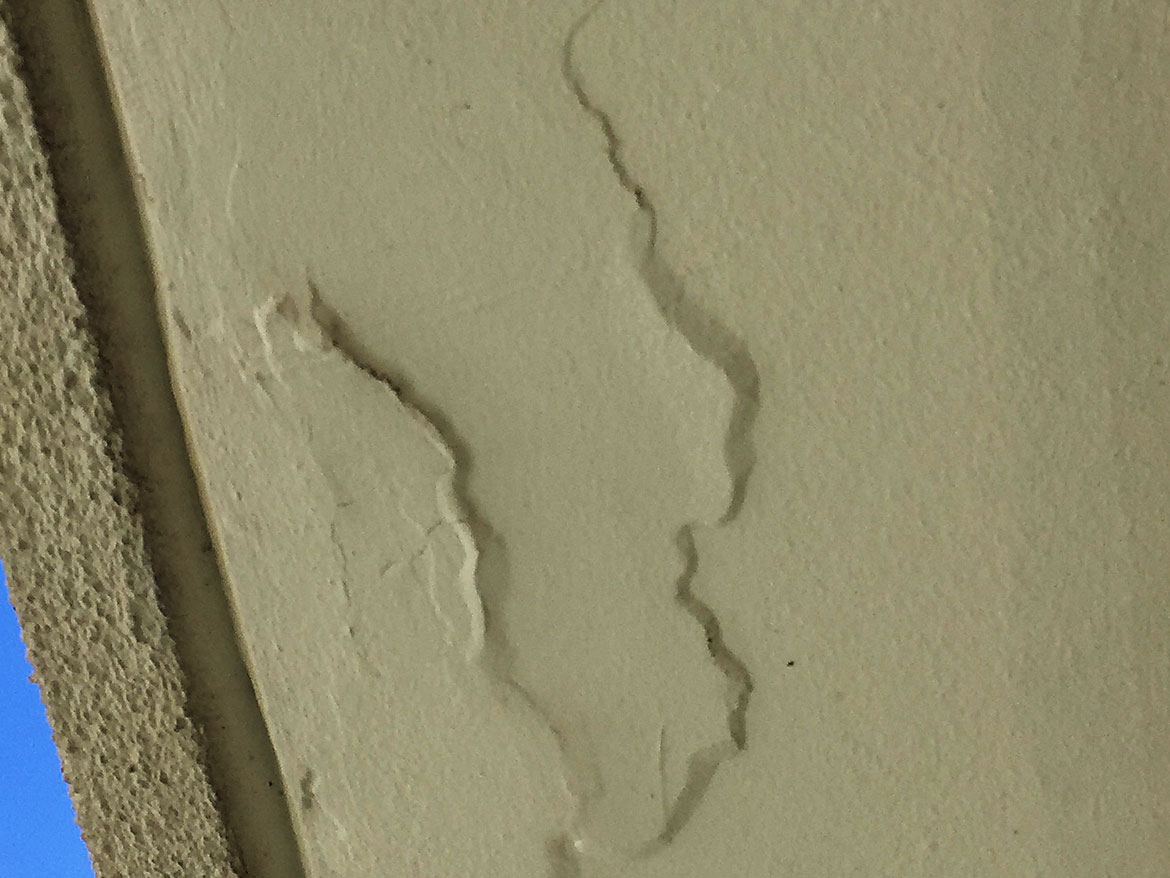
Parts of the underneath of the balcony were showing signs of ‘spalling’, where the reinforcement had deteriorated to such an extent that it was blowing out large chunks of the concrete but was held in place by the paintwork.
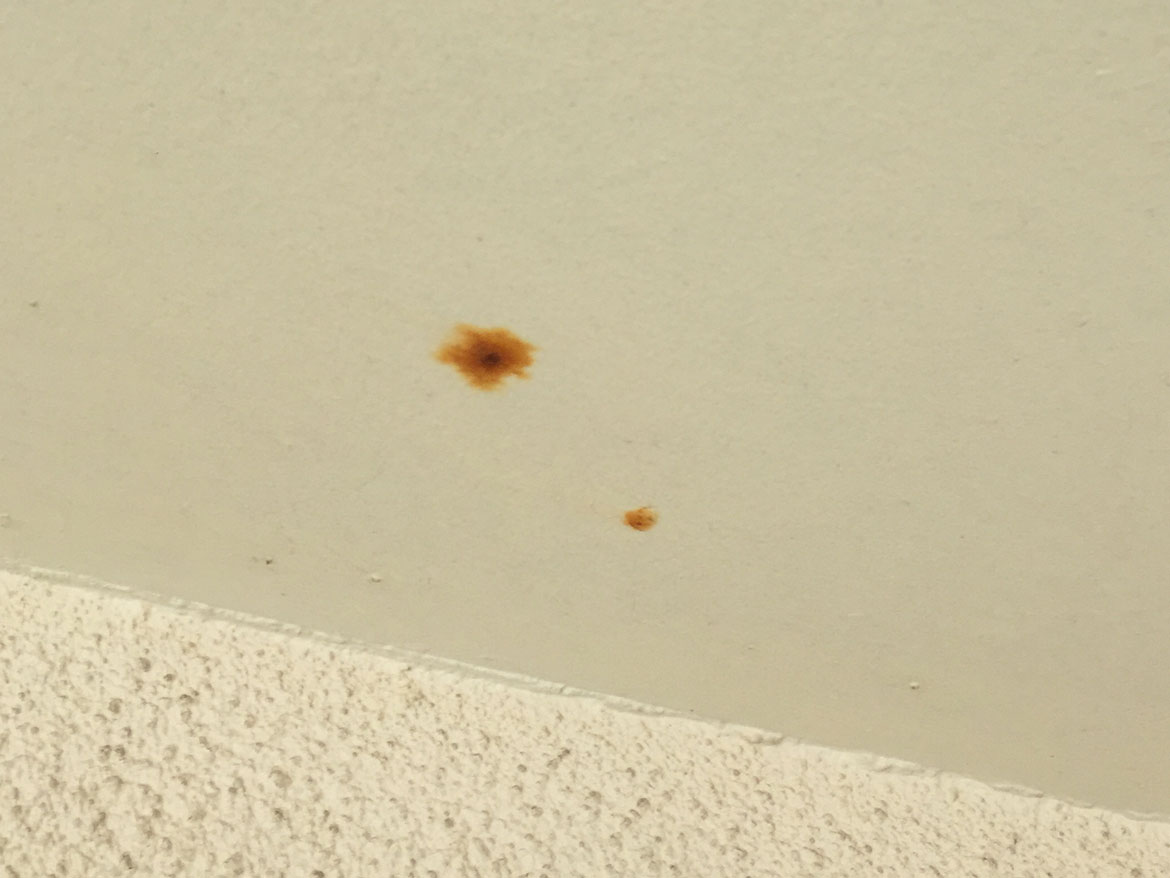
Small rust spots were also visible where the rust on the reinforcement had leached through the concrete and found small holes or cracks in the paintwork leaving tell-tale signs of larger problems. Spalling had not yet occurred in this portion of the balcony.
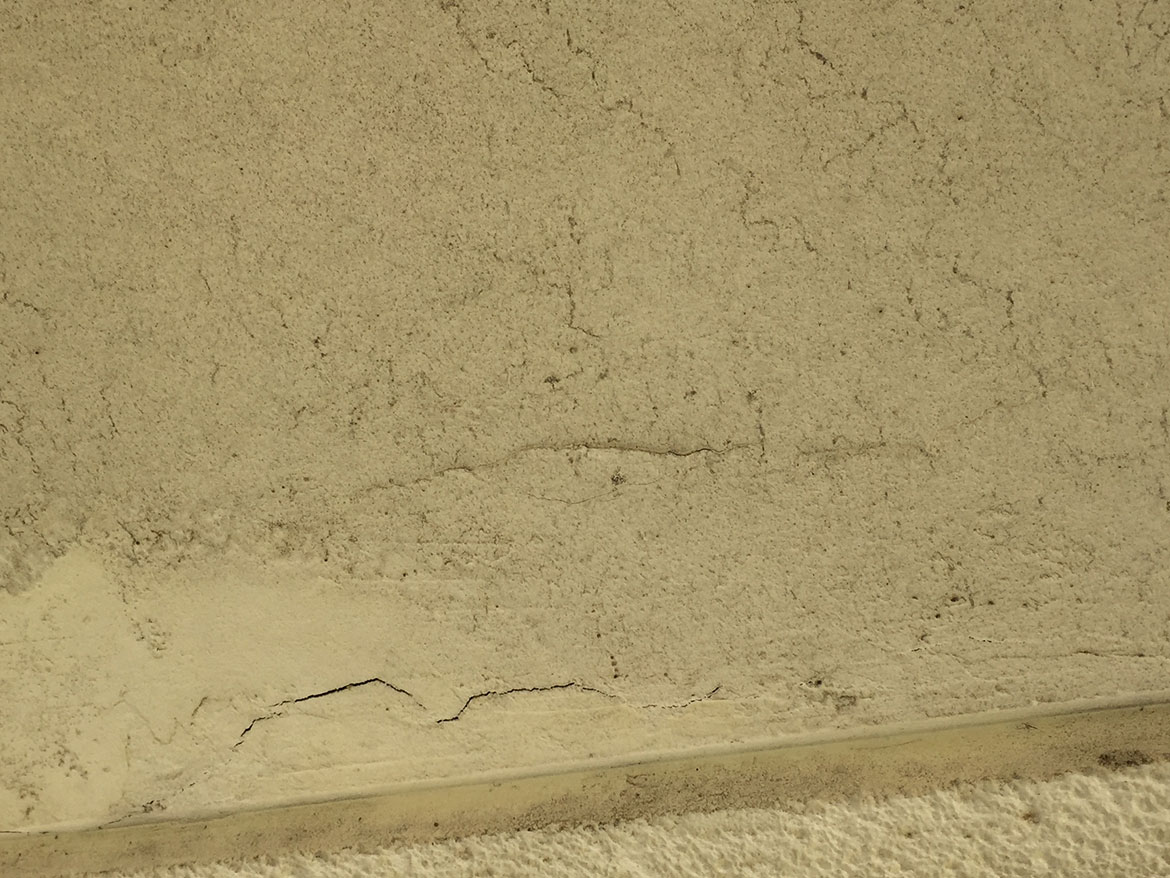
In other portions of the previous ‘repair’, there are signs of cracks and water damage coming from under the balcony.
Initial Exploration
The tell-tale signs on the surface can never provide an accurate assessment of the underlying damage. While we can have an educated guess, ultimately it requires physical exploration.

Select portions of surface concrete is removed by jack-hammering along each bar to expose the underlying damaged reinforcement. 50mm of rust-free/clean steel must be exposed before the full extent of the damage can be evaluated.
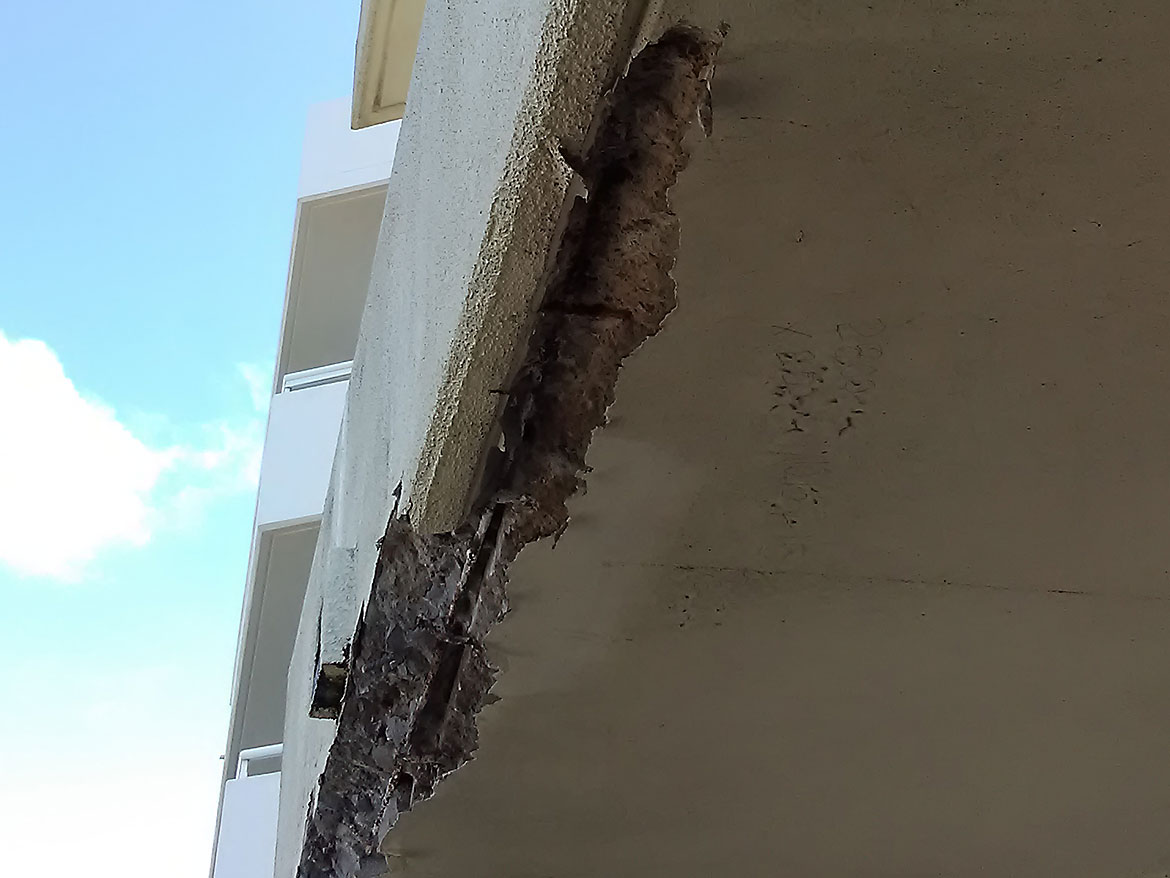
Usually the damage will be extensive with rust creeping along the reinforcement if the initial problem has been incorrectly ‘patched’.
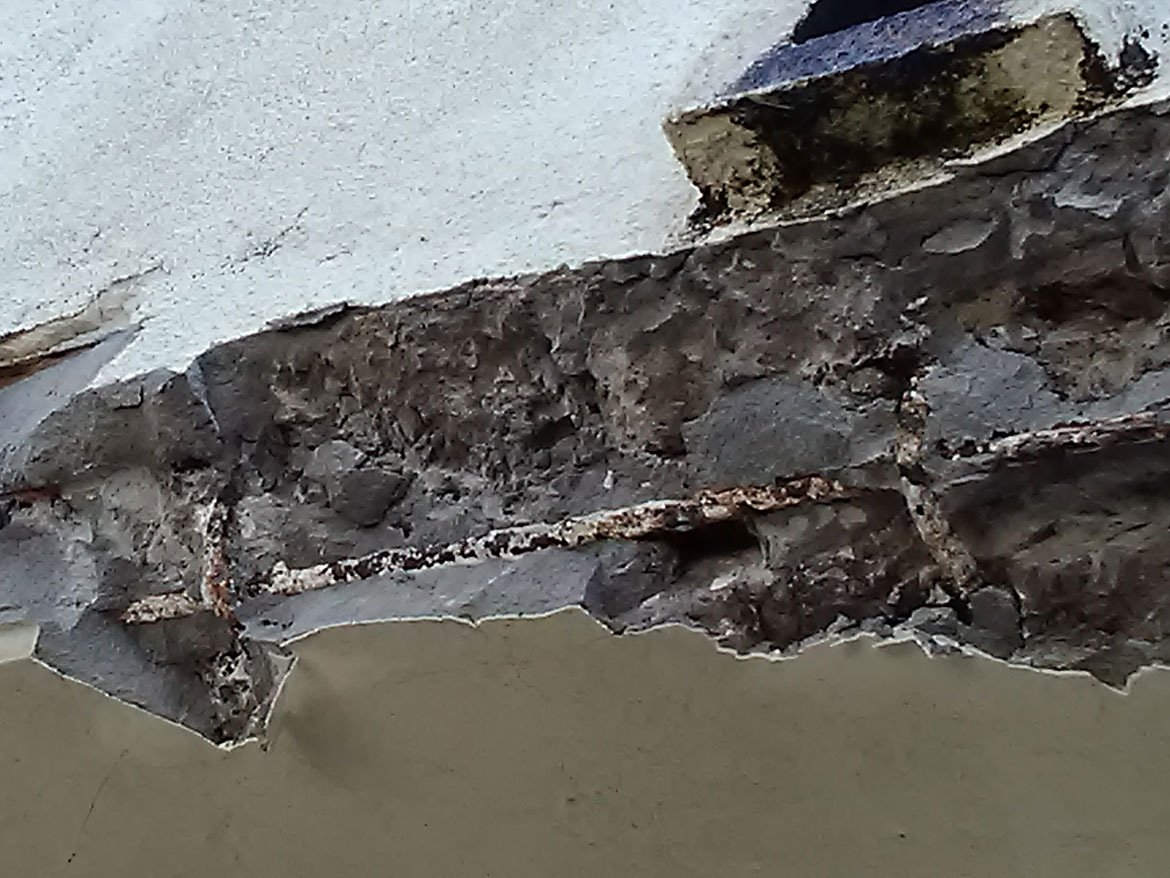
Even discolouration of the concrete itself can indicate that rust is being transferred through the concrete to deeper reinforcement.

Part A in this photo shows the prior incorrect repair work while part B shows the original concrete. The reinforcement in part A was not treated correctly and rust has now transferred along the bar into the deeper original concrete making the project much more extensive.
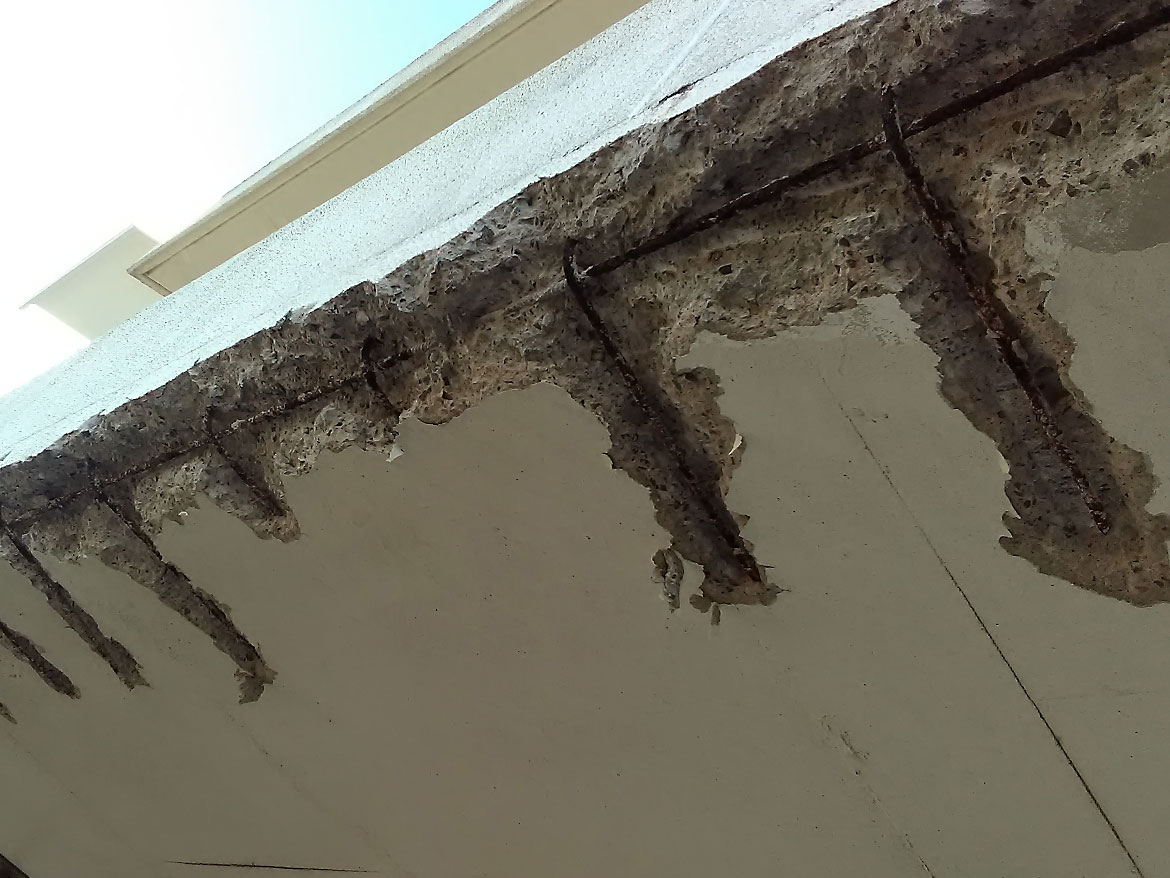
Even the lateral runners need to be exposed until we find the 50mm of clean reinforcement.
The repair work
Only after the true extent of the damage has been assessed can a comprehensive plan to repair the concrete be formulated. Depending on structural damage engineering reports and direction may be required. At 20% loss of steel, engineering involvement is a licensing requirement.
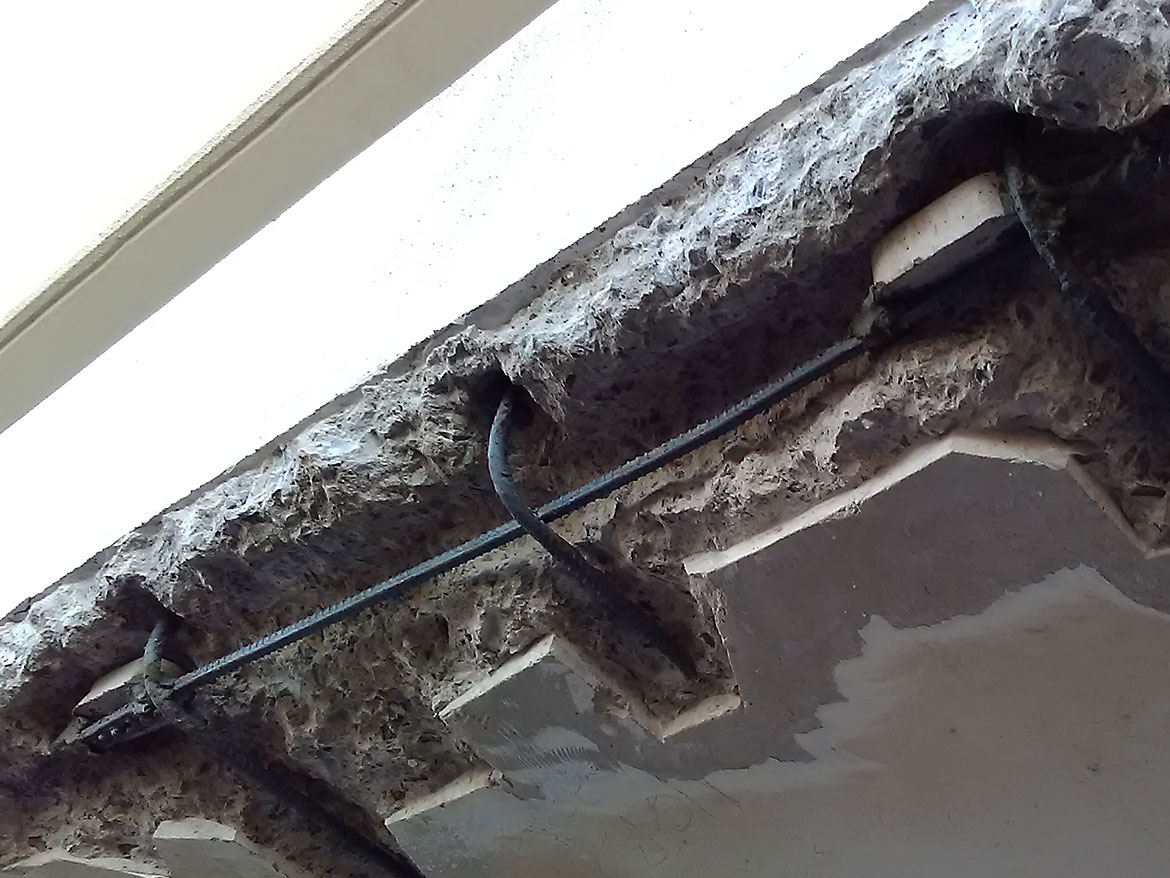
The edge of the concrete is cut cleanly to provide a better finish and where required new reinforcement is installed.
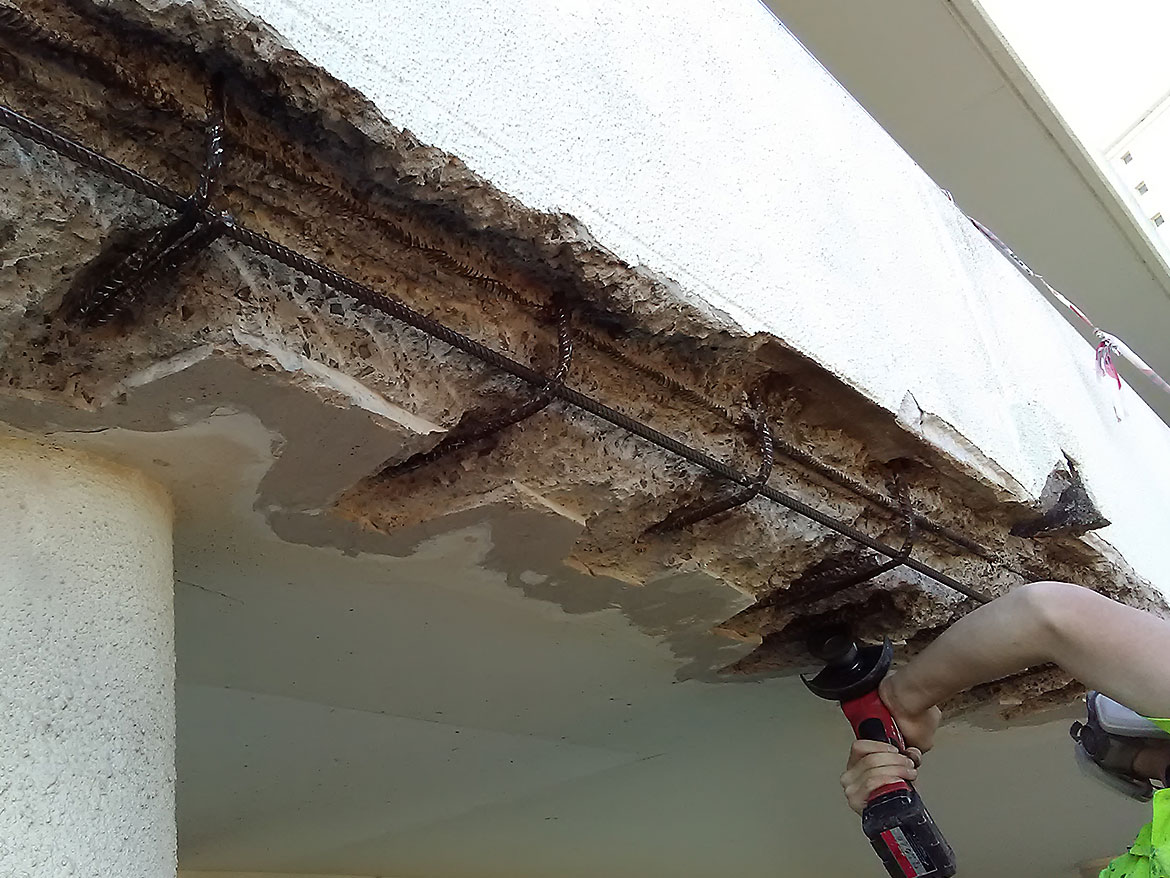
Here an SCCR staff member is cleaning rust from existing reinforcement.
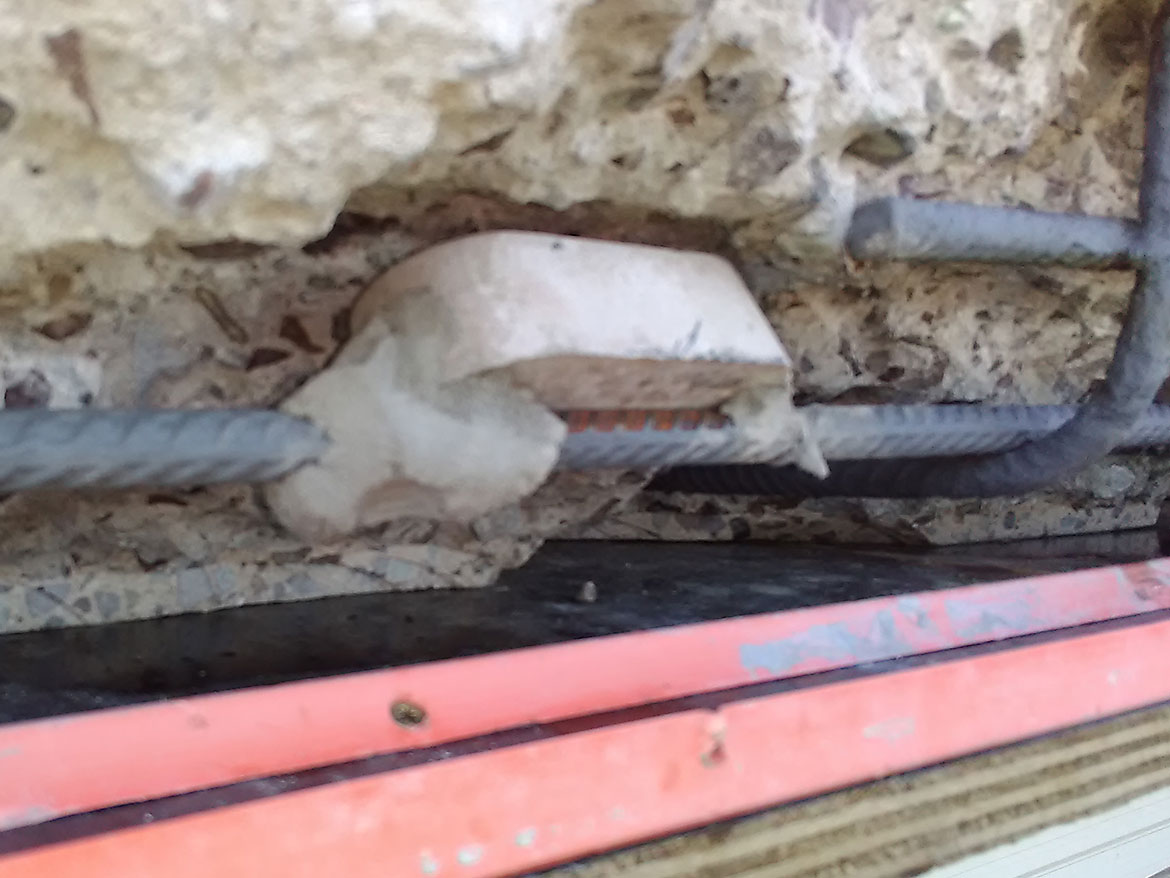
Anodes are placed strategically and attached to the reinforcement to provide extended life and rust protection.

During the repair process the balcony is held up with Acro Props.
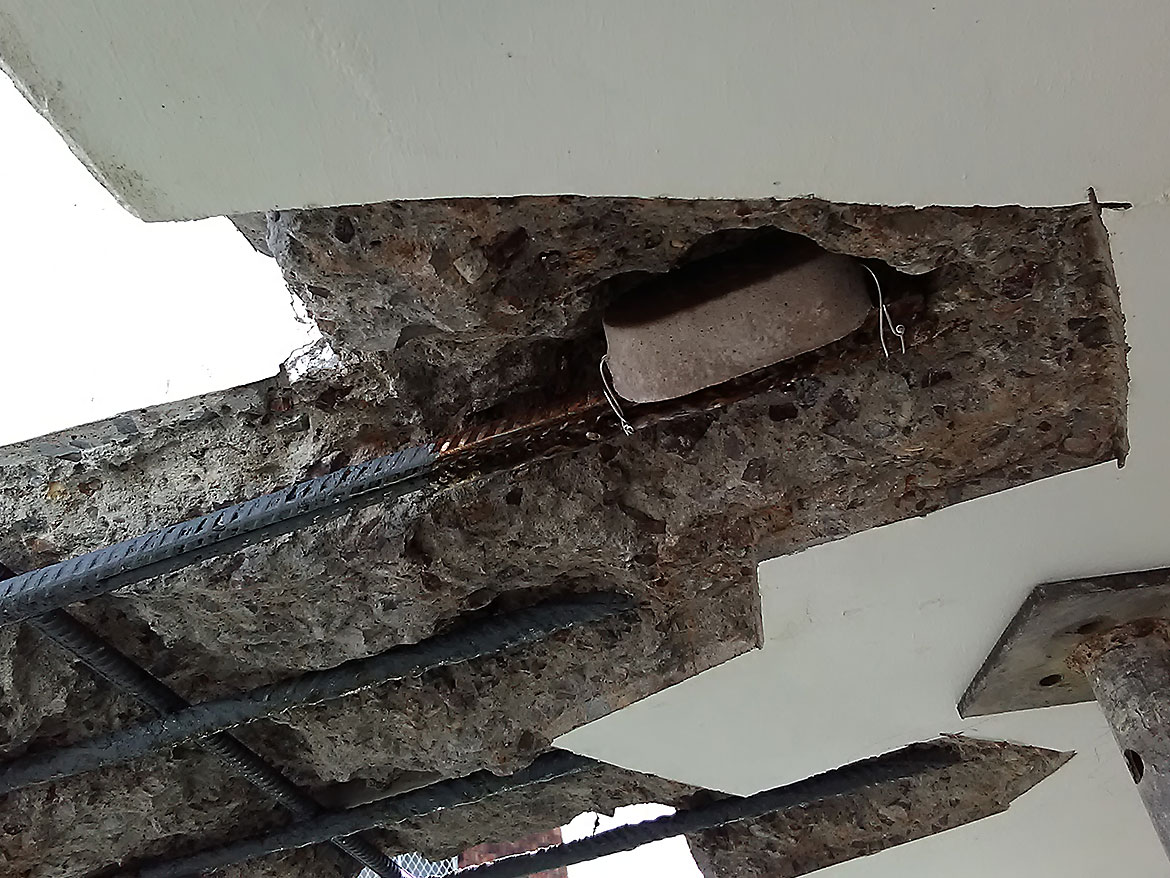
In this image the reinforcement has been treated with zinc enriched primer to provide extended life.
The finish
The repaired concrete is finished in preparation for painting.
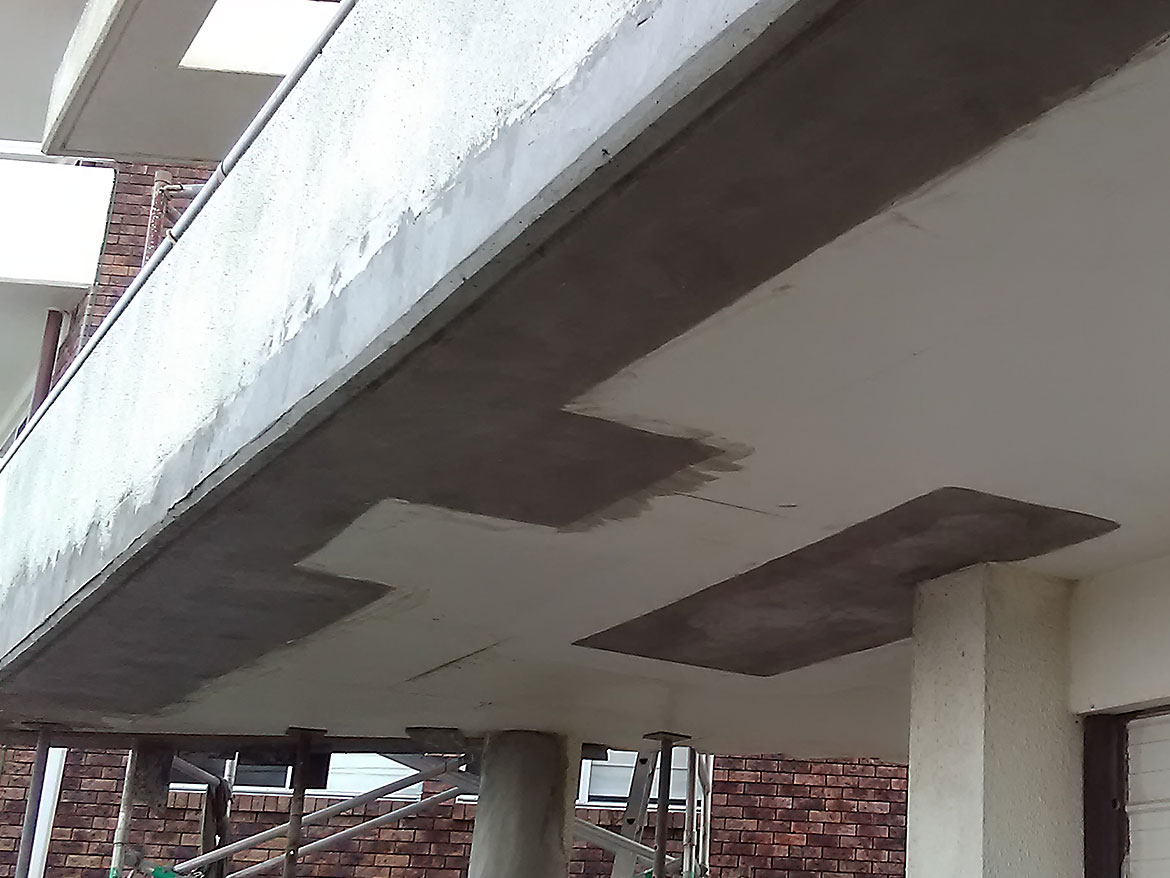
The treated reinforcement and anodes are packed with concrete repair mortar which is a polymer base to help prevent moisture ingress and provide longer life to the building.

Painting with specialty coastal-grade finishes is done to best match the rest of the building but also to provide further ongoing protection.
Contact us now - 0423 53 99 66:
This is a case-study of an all too common issue where a problem is identified but not repaired properly when it would have been relatively simple. The concrete cancer is sealed inside the repair job and over subsequent months gets progressively worse. Make sure you get the job done right the first time. Contact Suncoast Concrete Repairs as soon as possible on 0423 53 99 66 for an obligation free estimate.
To contact us via the web, please use the form below: